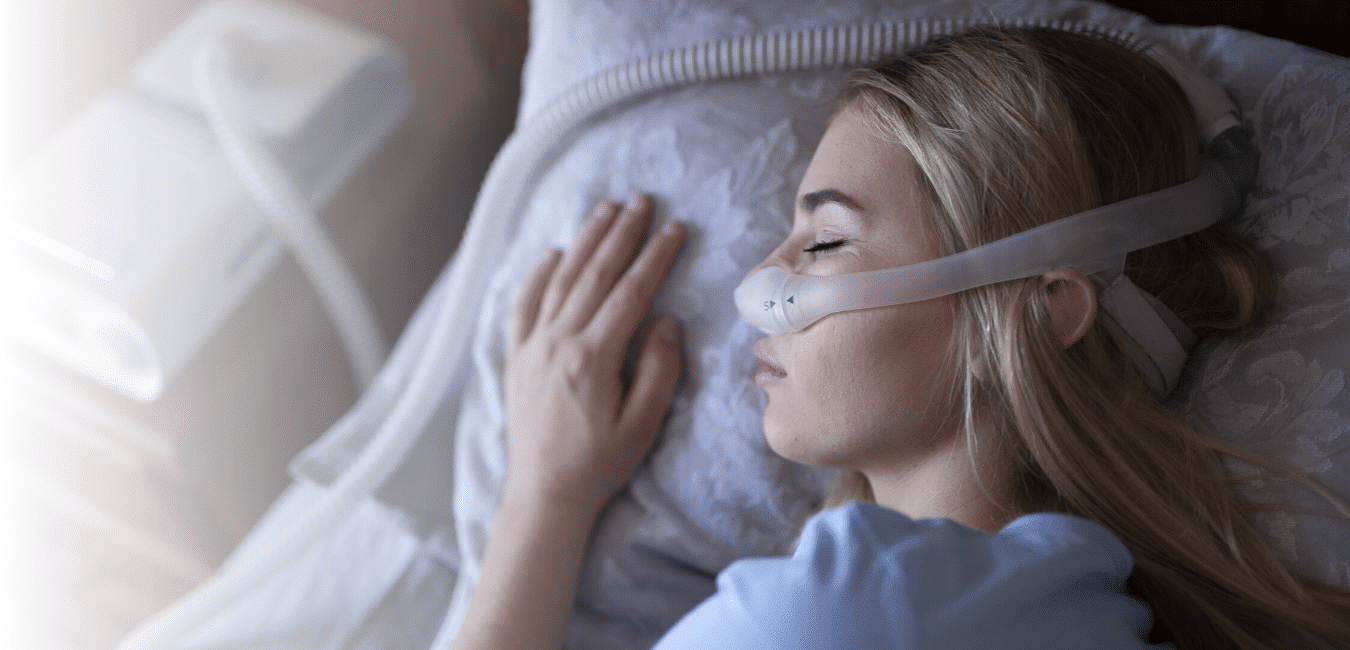Sleep apnea is a common sleep disorder. When untreated, it can contribute to type 2 diabetes and heart disease, and is associated with an increased risk of stroke and heart attack. 12 million people in North America have sleep apnea, but many go undiagnosed. This sleep disorder is more common in men than women by a ratio of 2:1–approximately 2% of middle-aged women and 4% of middle-aged men have been diagnosed with it.
There are a number of different factors contributing to sleep apnea risk. For example, it is more common in people with a short, wide neck. In women, the most common factor is menopause. If a close family member has it, your risk of developing the condition in the future increases. Most commonly, 50% of patients diagnosed with sleep apnea are overweight or obese.
Types of sleep apnea
_ Obstructive sleep apnea (OSA) is the most common form of sleep apnea that develops when the muscles in the throat relax, collapsing during sleep
_ Central sleep apnea occurs when your brain does not send the proper signals to the muscles that control breathing
_ Complex sleep apnea syndrome, also known as central sleep apnea in treatment, occurs when a person has both obstructive sleep apnea and central sleep apnea
Signs and symptoms of sleep apnea in adults
Most people don’t know they have it. Therefore, it is important to screen even those who are asymptomatic.
If a number of these 13 signs describe you, there is a good chance that you may have OSA.
- You snore loudly
- Your bed partner says you snore and sometimes stop breathing when you sleep.
- You sometimes wake up suddenly with shortness of breath.
- You sometimes wake up choking or gasping.
- You often wake up to go to the bathroom.
- You wake up with a dry mouth or sore throat.
- You often wake up with a headache.
- You have insomnia (difficulty staying asleep).
- You have hypersomnia (excessive daytime sleepiness).
- You have problems with concentration or memory while you are awake.
- You are irritable and have mood swings.
- You have risk factors for sleep apnea, such as being overweight or obese, drinking alcohol or smoking.
- You have decreased interest in sex or sexual dysfunction.
How does sleep apnea work?
During sleep, OSA is defined by the presence of frequent episodes of complete (or partial) obstruction of the upper airway, responsible for interruptions or significant reductions in breathing. Interruptions are called “apnea,” and significant reductions in breathing are called “hypopnea.”
All are associated with symptoms such as excessive daytime sleepiness, headaches and memory difficulties.
Any airway restriction, whether in the nose, mouth or throat, can contribute to OSA.
A quick and easy way to find out if you are at risk for Sleep Apnea:
The Stop Bang questionnaire is a frequently used way to screen for OSA.
This questionnaire, which takes only a few minutes, measures your degree of sleepiness during the day.
When to see a doctor
If you have early signs of OSA, discuss your symptoms with your doctor. They can provide guidance based on your specific situation or refer you to a sleep specialist. A sleep study, or polysomnogram, may be performed to help diagnose OSA. This test monitors many factors such as brain waves, eye movements, breathing and blood oxygen levels. Snoring, gasping, and respiratory failure during sleep are also measured.
OSA is more common than you think–and it’s not limited to adults. If you or your child (even a toddler) has the warning signs of OSA, you may be at risk for serious health consequences. Make an appointment with your doctor or sleep specialist to discuss your concerns, symptoms and possible treatment.

